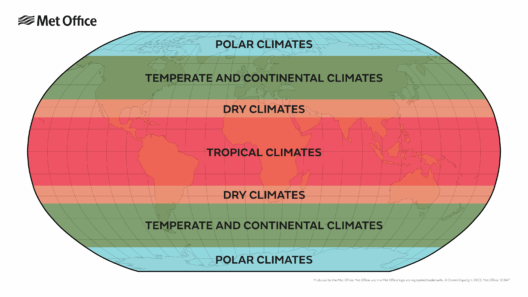The intersection of commerce and environmental stewardship has never been more critical than it is today. As the alarming consequences of climate change become increasingly evident, the business sector has an essential role to play in mitigating its impact. So, let’s pose a thought-provoking question: What if every corporation, regardless of size or industry, actively engaged in reducing their environmental footprint? This inquiry not only stimulates discourse but also underscores a myriad of challenges that many organizations face. To navigate this intricate web of responsibility, companies must recognize their potential to contribute positively to this pressing global issue.
First and foremost, corporations must acknowledge their contribution to greenhouse gas emissions. This realization can be likened to bringing a hidden malady to light. Many industries—especially fossil fuel, manufacturing, and agriculture—are significant polluters. According to recent analyses, these sectors account for a substantial percentage of global emissions. Companies should start by assessing their carbon footprint meticulously. By conducting environmental audits, businesses can measure their energy consumption, waste production, and overall environmental impact. Such evaluations are the bedrock upon which effective strategies can be built.
After grasping the extent of their environmental impact, corporations can adopt a slew of strategies to curtail emissions. Transitioning to renewable energy sources, such as wind, solar, and hydroelectric power, should be paramount. This is not merely an idealistic dream; several corporations are already reaping the benefits of embracing sustainable energy solutions. For instance, companies like Google and Apple have committed to operating entirely on renewable energy. By doing so, they not only mitigate their carbon emissions but also bolster their brand image, resonating with an increasingly eco-conscious consumer base.
Furthermore, the implementation of sustainable practices in supply chain management holds exceptional promise. It is crucial for corporations to ensure that suppliers share their commitment to environmental responsibility. This entails scrutinizing the sourcing of raw materials, minimizing waste, and advocating for ethical labor practices. By establishing partnerships with eco-friendly suppliers, businesses can create a ripple effect throughout their industries, fostering sustainability and prompting competitors to follow suit.
In addition to renewable energy and sustainable supply chains, corporations can innovate through the lens of circular economy principles. Unlike the traditional linear model, which follows a ‘take, make, dispose’ philosophy, the circular economy emphasizes the continual reuse of resources. Corporations can design products for longevity, facilitate easy repair, and promote recycling initiatives. For instance, companies like Patagonia and IKEA have championed recycling programs, allowing consumers to return used products for refurbishment or recycling. Such initiatives not only mitigate waste but also enhance customer loyalty, as consumers increasingly prefer brands aligned with their values.
However, the challenge is multifaceted. Transitioning to sustainable models demands substantial investment, and many corporations are reluctant to allocate resources for perceived long-term gains. Additionally, the short-term profit paradigm often dominates corporate decision-making. To combat this, businesses must recalibrate their success metrics beyond immediate fiscal returns to include environmental and social impact assessments. Taking a longer view may involve considerable upheaval, yet it is a necessary evolution in the modern marketplace.
Corporate transparency is another multifaceted challenge in the business of climate action. Companies can no longer afford to conceal their environmental practices or misrepresent their sustainability claims. Transparency breeds accountability and builds consumer trust. Implementing robust reporting standards—such as the Global Reporting Initiative (GRI) or the Carbon Disclosure Project (CDP)—can provide third-party verification and allow stakeholders to make informed choices regarding their investments and purchases.
It is also essential to consider the role of governance and stakeholder engagement in corporate sustainability initiatives. Sustainable practices should not be relegated to a single department; instead, they should permeate the entire organizational structure. Encouraging employee involvement through initiatives like sustainability committees or volunteer programs fosters a collective commitment to eco-friendly practices. The inclusion of diverse perspectives can further enrich sustainability efforts, enabling organizations to address climate challenges comprehensively.
The advent of technology further empowers corporations in their sustainability endeavors. Innovations such as artificial intelligence, big data analytics, and biotechnologies can significantly streamline processes and enhance resource efficiency. For example, AI can optimize energy consumption patterns in manufacturing processes, allowing firms to minimize their environmental impact while simultaneously reducing costs. As technology continues to advance, the potential for climate-positive innovations grows exponentially.
However, companies should recognize their limitations in isolation. This challenge is global in scope, necessitating collaboration across sectors and borders. Businesses, governments, and non-profit organizations must forge partnerships to share resources, knowledge, and best practices. Collaborative initiatives can drive progress far more effectively than isolated efforts, enabling a concerted approach to tackling climate change.
In conclusion, the business sector stands at a pivotal juncture concerning climate action. Corporations possess the capacity to effectuate significant change through dedicated efforts in sustainability, transparency, and innovation. By addressing internal challenges, embracing a long-term vision, and collaborating with diverse stakeholders, businesses can redefine their roles as proactive agents of change. The future hinges upon an unwavering commitment to environmental stewardship; will corporations rise to this challenge? The answer may very well dictate the trajectory of our planet’s health for generations to come.







